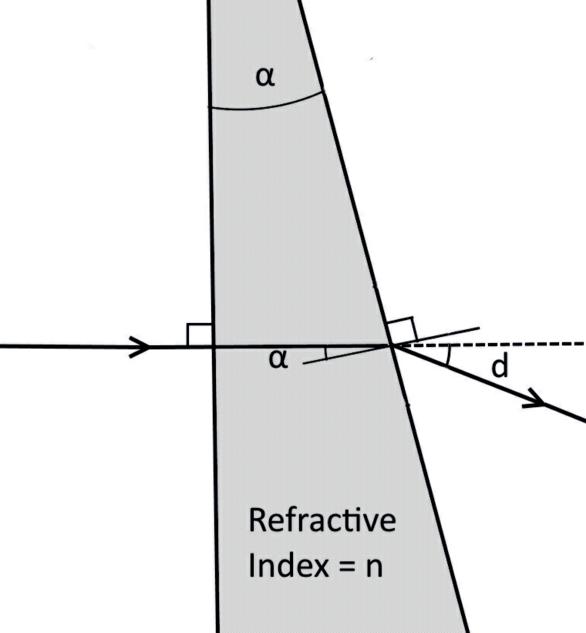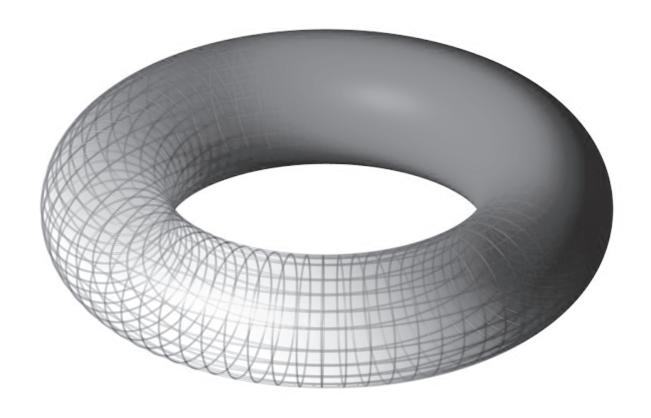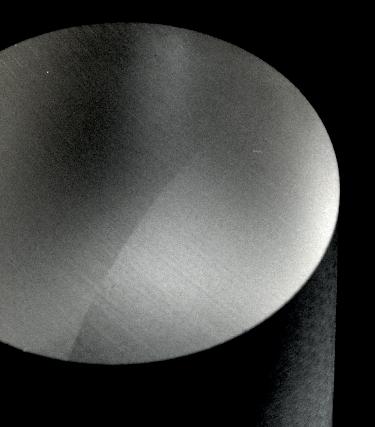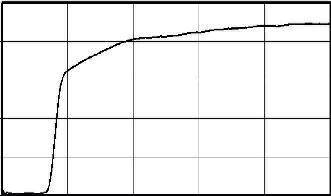



ThesaleofmaterialsdescribedinthisHandbookwillbecoveredbytheGeneral ConditionsofSaleofCrystranLtd.
Noresponsibilitycanbetakenforinaccuraciesindata.






ThesaleofmaterialsdescribedinthisHandbookwillbecoveredbytheGeneral ConditionsofSaleofCrystranLtd.
Noresponsibilitycanbetakenforinaccuraciesindata.

This handbook is published by Crystran Ltd as a service to optics professionals. It is designed to help you determine the best material for your application. The materials that we work with are mainly crystal or innovative glasses used for their particular transmission properties. We also have a great deal of experience within the company of the crystal growth techniques used in making the raw materials. If your requirement is for prototypes or for production quantities our technical team are happy to help.
For more information on our materials and services, please contact us:
Tel: +44 (0) 1202 307650
Fax: +44 (0) 1202 307651
Email: sales@crystran.co.uk
Crystran Ltd are primarily a custom manufacturer of optics to drawing or specification. For those who require a component fast we do hold an enormous range of stock. Access our shop from our website.
Website: www.crystran.co.uk
https://www.linkedin.com/company/crystran-limited/



ThisHandbook,aswellasbeingacatalogueoftherangeofmaterialsandproduction capabilitiesavailabletoyouatCrystranLtd,ishopedtobeausefulreferencesource foroptical,physicalandchemicaldata.
ThedatainthisHandbookisprovidedingoodfaithandreviewshavebeenmadeto verifythesourcesofinformationwherepossible;howeverCrystranLtdcanacceptno responsibilityforaccuracy.Itisnotalwayspossibletoverifydatawherethereare conflictingfiguresindifferentpublications,revisionsareacontinuingprocessandwe haveappliedourbestjudgementwhereappropriate.Referencesarestatedwhere possible.TransmissionscansareoriginalCrystrancompanydata.
FormulaeandnotesincludedwithintheHandbookarenotintendedtobe comprehensive.Wehavefoundthemausefulreferenceandconsultthem continually.
ValuesquotedintheHandbookare,asstandard,SIunitsexceptwherealternative unitsareincommonusage–anAppendixisincludedcontainingunitconversion tables.
CrystranLtdwouldliketoacknowledgethehelpofourassociates.
©CrystranLtd2023


SincethelastprinteditionwehavepublishedafreeAppforboth AndroidandAppleFormats.Thiscontainsmuchofthedatainthis Handbookaswellassomeroutinesformakingopticalandpressure calculations.Youarewelcometodownloadit.

CrystranLtdisamanufacturerandsupplierofhighqualityopticalcomponents.We manufacturewindows,lenses,prismsandspecialistopticsasbothstandardproducts andtothedesignsofourcustomers.Forover30yearswehavespecialisedincrystal materialsandexoticglassesandusedthemtomanufacturehighlypreciseoptical componentsfortheInfrared,UltravioletandVisibleregionsofthespectrum.
In2018welaunchedourwebshop.Weknowmanyofourcustomersprefertospeak tousortoemail,butwewereverypleasedwithitsimmediatepopularitybothwith existingcustomersandnewones.
Youcanseeafulllistofthematerialsweworkwithinthisbookandonourwebsite.
CrystranLtdnolongergrowcrystalin-house,howeverwestillretaintheexperience andunderstandingthatisinvaluablewhentalkingtosuppliersandcustomersalike. Crystranholdsextensivestocksofcrystalasingotstoofferacomprehensiverangeof crystalsandcrystalproductsforUV,IRandvisibleapplications.
Crystalmaterialscanbesuppliedinanumberofdifferentforms–rawboule,cutand shapedblanks,andpolishedoptics.Ourproductionfacilitiesincludecuttingand severalpolishingshopsfortheproductionofcomponentstocustomerspecifications. Ourdedicationtoinvestmentinbothstaffandequipmentenablesustoworkto increasinglyhigherstandards.Surfacequalitiesofuptoλ/20at633nmand parallelismofbetterthan2arcsecondscanbeachieved(dependentonmaterialand methodrequired).Doublesidedandconventionalpolishingtechniques,coupledwith computerisedinterferometryandothertestequipment,ensurethatspecifications canbemet.
Ourextensiverangeoftestequipmentincludes
TriopticsPrismMaster
TriopticsOptiangle
12″verticalinterferometer Bespoke
InteropticsIntervue (Interferometer)
AutoCollimator Parallelismandangulartolerance <2arcsecs
AutoCollimator
Fizeau Interferometer
TwymanGreen Interferometer (LowCoherence)
Parallelismandangulartolerance <2arcsecs
Surfaceflatnessaccuracy<λ/20 (λ=632.8nm)
Surfaceflatnessaccuracy<λ/20 (λ=632.8nm)Enablestheabilityto measuresurfaceflatnessonparallel partswithoutrearsurface Interference
6″Railinterferometer
Fizeau Interferometer
Surfaceflatnessaccuracy<λ/20(λ= 632.8nm)
LensRoCbetween-900mm(concave)and+650mm(convex)
Perkin-ElmerFrontierFTIR Spectrophotometer
Perkin-ElmerLambda750 Spectrophotometer
Spectraltransmissionbetween 2 μmand22 μm
Spectraltransmissionbetween 190nmand2.0μm
LymanAlphaInstrument Spectrometer Transmissionat121.6nm
OptiluxSD/RedLux Scratch/Dig Evaluation System
TaylorHobsonCCI6000Talysurf
TaylorHobsonPGI840Talysurf
Bristolinstrument
Roughness Interferometer
FormTalysurf
OpticalThickness Gauge
MitutoyoCoordinateMeasuring Machine CMM
BatyVentureVisionSystem
OpticalCMM
Automatedassessmentofsurface imperfectionsaccordingto: MIL-PRF-13830B&ISO10110_7
Surfaceroughness(Ra/Rq)with resolution<0.1Å(0.01nm).
Asphericformerrortoanaccuracy <50nm(Pt)
Thicknessrangebetween0.1mmto 8mm(CaF2),accuracy< 2μm
Measurementenvelopeof400x 400x400mm,accuracy<3μm
Dimensionalaccuracy<2μm
TriopticsSpherocompact ContactRadius Instrument Convex/concaveRoC,accuracy <5μm(mainlyusedforin-process checks)
Specifyingapolishingstandardmustbeapproachedwithcaution.Costscanescalate rapidlyformoreexactingspecifications,particularlyifcombinationsofrequirements areneeded.Forinstance,ultra-flatnesscanbeachievedattheexpenseofagood cosmeticfinishandviceversa.Goodflatnessandparallelisminthinwindowsis possiblewithadouble-sidedpolishingtechnique.
Typical Polishing Specifications used at Crystran
Itisnotpossibletogiveexamplesofatypicalspecificationasthatwilldependon severalfactorssuchasmaterial,sizeandmethodofmanufacture.Wedohavecertain specificationsthatwealwaysapplytowindowsasstandard(sometradedmaterials mayhavedifferentspecifications).
Diameter (up to 50mm) +0/-0.1mm
Length of sides (up to 50mm) +0/-0.1mm
Thickness +/-0.1mm
Surface quality (IR grade) 60/40orbetter
Surface quality (UV grade) 40/20
Edge chips Upto0.5mm
Clear aperture 80%ofdiameter
Ourtechnicalsalesteamwillbehappytodiscussandadviseonthesematters.
CrystranhaveanextensivelistoftoolingandNPLqualifiedtestplatesforthe manufactureoflenseswithclosetolerances.Pleasecontactusformoreinformation.
Thisisaquickandcosteffectivemethodformanufactureofsilverchlorideandsilver bromideoptics.Thequalityachievedbythistechnique,althoughinferiorto conventionalpolishing,ismorethanadequateforawiderangeofinfra-red applications.
Thetechniqueisparticularlyappropriateforspectroscopicmini-cellwindowswhere thesurfacehasasmalldepressionforliquidfilms.
Inthecourseofourhot-forgingoperationswehaveacquiredastockoftoolingwhich itiseconomicaltodesignaround.Pleasecontactusaboutsizesavailable.
Bubbles&Flaws(ISO/BS/MILSpecification1/)
Thesearenormallyassociatedwithglassesandrarelywithcrystal,howeverpresent insoftcrystalssuchasCsI,KRS5etc.
Example: 1/5 x 0.06 is 5 flaws less than 0.06mm (square root of the area)
Stria(ISO/BS/MILSpecification2/)
Striaarevitreousinclusionsmainlyinglassandrarelywithcrystal.Thereare6grades ofdecreasingseverity.
Example: 2/0 is the greatest amount of stria, 2/5 is the lowest amount
Inhomogeneity classes in optical materials as per ISO 10110 Part 4
Flatness(ISO/BS/MILSpecification3/)
Flatnessisspecifiedintermsofthewavelengthoflightwhichrepresentsthedegree ofpower,withtheadditionofformerrorwhichdefinestheallowedirregularityof thefringepattern.
Example: 3/2(0.5) is 2 fringes power/0.5 fringes irregularity
Parallelism
Theparallelismofawindowcanbespecifiedintermsofangle,usuallyasminutesof arc.Sometimesitisintermsofthicknessvariationor‘run-out’.Conventional polishingwilltypicallyproduce<3-10arcminutes.Double-sidedpolishingcan produce<5arcseconds.Topreventmultiplereflectionsbetweenfaces(anetalon effect)itmaybeprudenttohaveasmallwedgeanglespecified.
LensCentration(ISO/BS/MILSpecification4/)
Lensesinvolvevariationsonotherspecifications.‘Flatness’istheradiusofcurvature asmeasuredagainstareferencestandardtestplate,whilst‘parallel’ismore accuratelyspecifiedascentrationerror.
Example: 4/3’ is 3 minutes centration.
Visualappearanceisoftenasubjectivematterandisstillcommonlyspecifiedby scratch/dig.Thisclassifiesthesurfaceintermsofthemaximumlengthofsmall scratchesafterpolishing.
Underthisclassification,S/D80/50wouldberegardedasquitepoorandappropriate forsimplespectroscopicwindowsandS/D20/10isanexactingstandardsuitablefor lowscatteringlaserapplications.S/D60/40isareasonablyroutinefinish.
*Thisparameterisameasureofthebrightnessofscatterratherthanthephysical widthofthescratch.
WorkingEquivalentsAppliedatCrystran
Thesearenotabsolutemeasuresbutusedasaguidebaseduponourexperience.
Surfacefinishcanalsobespecifiedintermsofsurfaceroughness(Roughness Average,Ra)andcanbemeasuredbyinterferometricprofiling
Stresses(ISO/BS/MILSpecifications6/)
Stresses,knownasstrainbirefringence,arevariationsinrefractiveindexgenerally causedduringtheannealingoftheglassorcrystal.Itisdefinedastheopticalpath differencecausedbythestressedregionintermsofnmpathdifferencepercm referencepath.Generally,CaF2 andsimilarcrystaliscontrolledbetterthan5nm/cm.
Example: 6/10 defines strain birefringence of 10nm/cm.
Chamfersareusuallyrequiredbothtoprotecttheworkfromchippingduring polishingandalsoinuse.Protectivechamfersarereferredtoas‘breakedge’andmay beremovedbythepolishingprocess.ForoperationalreasonsCrystranmaychoose nottoapplychamferstosome,especiallysmallwindows.Somepolishingoperations mayrequireslightlylargerchamfers.
Chamfersareusually45°(nominally)andmeasureddowntheedgeoftheoptic unlessotherwisespecified.Thesizeofchamfersisconsidereduncriticalunless specificallyrequested.

Birefringenceisaphenomenonthatoccursinnon-cubiccrystals.Mostmaterialsare isotropicandthespeedoflightisthesameinalldirectionsasitpassesthrough. Birefringentmaterialsareanisotropicandthespeedoflightdependsontheplaneof polarisationanddirectionofpropagationofthelight.
Whenlightisincidentonabirefringentmaterial,itissplitinto2rays–theordinary(o ray)andtheextraordinary(eray).Asillustratedbelow,theraysbecomepolarisedin perpendiculardirections.Theseraystravelatdifferentspeedsandmaytravelin differentdirections.
Thereisonedirectioninabirefringentmaterialwherethe2raystravelaligned–this isknownastheopticaxis.Thelightwillbehaveasitwouldinanisotropicmaterial. Whenlightisincidentatanyangletotheopticaxis,theeandoraysaresplitandare separatedinspace.Theeraywillrotatearoundtheorayifthematerialisrotated.
Whenlightisincidentonaboundarybetweentwomedia,someofthelightislostin reflection;thislossiscalculatedasapercentageoftheintensityoftheoriginalbeam andisdependentonthereflectiveindicesofthematerial,theangleofincidenceand stateofpolarisationofthelight.Thereflectionlossofunpolarisedlightnormally incidentonasurfacefromonesurfaceis:
Fortransparentmaterials,thesecondsurfacemustbeaccountedfor.Thus,the internaltransmittanceofaparallelplateis:
Unpolarisedlightreflectedfromaplanesurfaceboundaryoftwotransparentmedia ispartiallypolarised.Atthepolarisingangle(Brewster’sangle θb)thereflectedlightis completelypolarisedandperpendiculartotherefractedray.
Totalinternalreflectionoccurswhentheangleofincidenceofabeamoflight incidentuponaninterfaceisincreaseduntiltheangleofrefractionis90°.Thiscritical angle θc canbefoundintermsoftheindexofrefractionforthetwomediabysolving Snell’sLawwhen θr =90°.
Thisphenomenononlyoccurswhenthelightisemergingfromadensermedium,i.e. whenn1 isgreaterthann2.
Formanyinorganicmaterialsusedinopticalapplications,therefractiveindex remainsconstantandtheabsorptioncoefficientiszeroorverysmalloverthe majorityofitstransmissionrange.WhenReststrahlenmaterialsareilluminatedat wavelengthsthatexcitetheatomic,orcrystallatticestructure,anumberof resonanceeffectsarenoticed.AstheReststrahlenmaximumfrequencyis approached,therefractiveindex(n)undergoesarapidchange,theextinction coefficient(k)risesrapidlyandtheFresnelreflectioncoefficient(R)maybecome high.Therefore,attheReststrahlenmaximumfrequencyforaparticularmaterial,the reflectanceofthatmaterialrisessharply:
TheReststrahleneffectoccursnotablyinthe6µmto300µmrange.Therearenot manysatisfactoryfiltersinthisregion;hencetheeffectisoftenusedforthe extractionofanarrowspectralregionfromaspectralcontinuum.
Inpracticalapplications,somepropertiesofReststrahlenmaterialsaresignificant; particularlythefactthatthemaximumreflectanceincreasesasthetemperatureis reduced.Whenusedasthinfilms(forcoatingsonmirrorsandlenses)theyexhibit interferencemaximaandminimaontheshortwavelengthsideofthereflectance peaks.
MetrologicalWavelengths
UV Bands
UV-A=400-320nm
UV-B=320-290nm
UV-C=290-100nm
Transmission%=100/10
WhereNDistheopticaldensity
TheKnoopscale(HK)isthemostcommonlyused,theothersbeing;Moh,Vickers, RockwellandBrinell.
TheexperimentalprocedureforthederivationofavalueontheKnoopscaleistouse apyramidaldiamondpointwhichispressedintothematerialinquestionwitha knownforce.TheindentationmadebythepointisthenmeasuredandtheKnoop numbercalculatedfromthismeasurement.Thetesthasbeendesignedforuseona surfacethathasnotbeenwork-hardenedinthelatticedirectioninwhichthe hardnessvalueisbeingmeasured.ThehardnessisusuallystatedasaKnoopfigure buttheunitsareactuallykgfmm¯²
ThevaluesontheMohscalearearrivedatbymeasuringtherelativehardnessof materialsbyobservingwhichmaterialsareabletoscratchothermaterials.TheMoh scale,whichisnotlinear,islimitedbythesoftestmaterialTalc(Moh=1)andthe hardestmaterialDiamond(Moh=10).
Elasticcoefficients,otherwiseknownasElasticStiffnessConstantsaretheconstants ofproportionalitybetweenthecomponentsofstressandstrain.Theyaretherefore relatedtotheelasticmoduli.
Transmittance= IE Io
Intensityofexitbeam
IntensityofIncidentbeam
Transmittance is usually expressed as a percentage.
Transmissivity=InternalTransmittanceperunitthickness
Absorptance= Io -IE Io
Intensityofabsorbedbeam
IntensityofIncidentbeam
The complement of transmittance
Absorbance=log10 Io Ie ( ) log10 100 20 ( )
Example: 20% transmittance is = 0.7 absorbance.
WaveNumber= 1 wavelength (cm)= 10000 wavelength (µm)
Focallength(mm)= 1000 dioptre
Example: 20 dioptre = 50mm F.L.
BeamDeviationthroughWedge Angle(α)toprovideagivendeviation.
α =atan sind
n-cosd ( )
TransmissionAbsorptionCoefficient
Ti =exp(-µ.L)
µ=-(lnT)/L
µ=AbsorptionCoefficient(cm⁻¹)
L=PathLength(cm)
Ti =InternalTransmission(%/100)
Te =Ti +Reflectionlosses
n=RefractiveIndex

Example: n = 1.5492 ; Path length 10cm
External Transmission = 76.8% = 0.768
Reflection loss is 0.0887 (page 14)
Ti = 0.768 + 0.0887 = 0.8567
µ = - (ln 0.8567) / 10 = 0.0155 cm⁻¹
Degrees°C= 5.(°F-32)/9
32+(9x°C)/5
(1) pounds/sqinch 14.7psi
(2) inchesofmercury 29.9213"
(3) mmofmercury(torr) 760mm(760torr)
(4) millibar 1013.240mBar
(5) Pascals 101.324kPa
(2) and (3) are measures of a column of mercury supported by 1 atmosphere.
(4) and (5) are actual measures of force/area and take account of the density of mercury (13.595 gm/cc at 0°C) and the acc of gravity (980.665 cm/sec²) when converting from a mercury barometer reference.
Mediumvacuum20to10¯²torr
Highvacuum10¯²to10-6 torr
Veryhighvacuum10-6 to10-9 torr Ultrahighvacuum>10-9 torr
LowEarthOrbit=10-10 torr
InterplanetarySpace=10-16 torr
ThinLensEquation:
LensMakersEquation: Forathinlens,itreducesto:
Foraplano-vexorplano-cavelenstheequationreducesto:
Thus:
Sagisthedistancefromthelensvertextothelensedge
Sign convention of +ve and -ve radii and linear measurements must be applied consistently.
so = Object distance
F1 = Front focal point
V1 = Front vertex
H1 = First principal point
r1 = Front radius of curvature
f = Effective focal length
FFL = Front focal length
n = Lens Refractive Index in air
si = Image distance
F2 = Back focal point
V2 = Back vertex
H2 = Second principal point
r2 = Back radius of curvature
D = Diameter of lens
BFL = Back focal length
P = Power in dioptre
Spheres
Areaofsurface=4πR2
Volume=
SegmentofaSphere(Lens)
Thesegmentisavolumecutofffromaspherebyachordplane.
SphericalArea =2πRT


TotalArea =
Volume =
SectorofaSphere
Thecircularsectorisathreedimensional portionofasphereenclosedbythecurved surfaceandtheconetothecentre.
Totalarea =
Totalvolume =
Thesegmentisaportionofacircleinformally definedasaareacutofffromtherestofthecircle byachord.
Thecircularsectorisawedgeofacircleenclosed bythecurvededgeandtheangletothecentre.

Ellipse
Area =π AB
Parabola
Area=
FrustumofaPyramid
Volume= A1 =areaofbase A2 =areaoftop
H =height
Forapyramid A2 =0
Foraprism A1 =A2
FrustumofaCone
Volume= R=radiusofbase r=radiusoftop
H =height
Foracone r=0
Foracylinder R=r


Calculationofthicknessofopticalwindowsusedinvacuumorpressureapplication
DEFINITIONS
ThemaximumstressSmax onauniformlyloadedwindowisgivenby:
Smax =(K.D2 .P)/(4.T2) and also Smax =Fa /SF (See Safety Factor Box)
Andthensolvingforthickness,T
T =D. � (SF.K/4). � (P/Fa)
T
Thevalueof K dependsonthemethodofsupport,upontheforceintroducedin clampinganduponthebrittle/ductilecharacterofthewindowmaterialinvolved. Empirically,a K valueof0.75isfoundsuitableformostopticalcrystalswhenthe perimeterisclamped,andavalue50%greaterwhenunclamped.
Kc =0.75 Ku =1.125
Toavoidplasticdeformation,themaximumstress(Smax)shouldbelessthanthe ApparentElasticLimit(Fa)byanappropriateSafetyFactor(SF)
Smax = Fa /SF
Amodestsafetyfactorof4(i.e.,maximumstressequalsonequarteroftheelastic limit)seemstosufficeformanylaboratoryapplicationswheretheoperatingconditionsarereasonablyundercontrol.Severeconditionssuchasthermalshockrequire specialconsiderationandmayevenresultinadecisiontousea reduced thickness. ThepublishedApparentElasticLimitofsomematerialsmaynotbecompletely reliable.Crystalsvaryandcleavagemayoccuraccordingtograinboundariesorthe particularcutoftheingot.Ultimately,thefinaldesignthicknessmustbeacarefully considereddecisionandmayneedtobeempiricallytested.CrystranLtdcanaccept noresponsibilityfortheadoptionofthesecalculationsandrecommendations.
� Acarefullydesignedwindowmaystillbreakbeforeanysignificantloadingifthe mountingintroducesanylocalisedstress.
� Mismatchofexpansioncoefficientsgenerallydictatestheuseofresilientmaterialbetweenwindowandmounting.
� ThermaloutgassingusedinUHVsystemsshouldbeundertakenwithcautionwith crystalwindowsasthermalshockmayinitialcleavageinsomecrystals
� Theconstantforclampedmountingallowsfornoflexureatthewall.Theuseof softgasketsmayallowflexuresotheformulaforthe"unclamped"condition shouldbeused.

Thestandardasphericformulais:
BeawarethatforsomereasonmanydesignersshowcastheRadius(R)andforgetto showthereciprocal.Thisofcourserenderstheequationobviouslyunworkableinmost casesbutitcancatchyouout.TheRadius(R)doesnotrepresenttheclosestspherical surface,butthesphericalsurfacefromwhichtheaspherictermscausethecurveto divergefromit,eithershallowerordeeperthanthesphericalcurve.Theclosestor“best fit”sphericalsurfaceistheRadiuswhichmatchestheasphericsagatthelargestuseful diameter.
Takingcaretoobeythesignconventions,thesagfiguremustbeaddedtothelens centrethicknesstoderivetheactuallensthicknessatanypoint.Donotsimplypresent sagdatatothemachinist,theyarelikelytogeneratetothatfigureandproducealens withzeroedgethickness.
Mostopticaldesignersuseonlytheeven-ordertermsfromA2 toA20, butshouldtheybe requiredtheodd-ordertermsareavailable,fortheprofileonly,fromA1 toA19
TheconicconstantKhastraditionallybeenusedtodesignthefirstaspheres;simple parabolasandhyperbolas.ItisnowlargelyredundantintheaboveequationastheAx termscandefineanysurface.Asphericalsurfaceisdefinedbytheaboveequationwhen K=0andallAx termsarezero.
Crystalopticsaredelicateandshouldbetreatedcarefullyiftheyaretobecleaned. Describedisamethod,butthetechniquecomeswithpractice.Handleopticsbythe edgeusinglint-freenylonglovesorplasticprotectivegloveswhencleaningwith solvent,checkingthatthesolventdoesnotattacktheglove.Handleopticsaslittleas possible.Cleaningmaycreatefinescratcheswhichyoucannotseeeasilybutwhich maycontributetoscattering,particularlyintheUV.Iftheopticismounted,trynever toletsolventcreepintothemountingring.Useanairjetonlyforremovalofdust.
VeryDelicateMaterials:CsI,KRS5,Germanium,ZincSelenide,ZincSulfide.
Softmaterialsareinclinedtotakemarks(sleeks)orshowupmarkseasily.Washina solventsuchasmethanolorpropanolforlightmarking.Useanenvironmentfriendly solventsuchasNuSolRapide(areplacementfortrichloroethylenewhichisavailable intheUK)orotherwiseacetone,forgreasyorwaxycontaminants.Soaktheopticand wipewhilstwetwithcottonwool(absorbentcottonintheUSA)dippedinthesolvent andlettheopticdrybyevaporationorassistitwithairflowasitiswiped.
DelicateMaterials:Fluorides,Silicon.
Theseshouldbetreatedasabovewherepractical,butitisoftenpreferabletoclean themcarefullywithadamptissue.WeuseKimtechScience100professionalwipes. Donotrubtheoptic,butwipegentlyandallowthethinnestfilmofsolventtodryby evaporation.
HarderMaterials:Glasses,Sapphire.
Wetreatthesematerialsinthesamemannerasdelicatematerials.
CoatedMaterials: Coatingsshouldbetreatedasdelicateeventhoughtheycanbe moreruggedthanthecrystalbasematerial.DLCongermaniumisanexampleofa verytoughcoating.
AqueousCleaning:CalciumFluoride,MagnesiumFluoride,LithiumFluoride
Wehavebecomeawarethatverysmallabsorptions(<1%)canoccurduetoclosely bondedorganicsurfacecontamination.Notably,thisisfoundat3.4μmandprobably duetowaxesusedinthepolishingprocess.Aqueouscleaningusingdemineralized waterwithasurfactantdetergentsuchasAlconoxcanbeeffective.Useabathofthe freshwarmsolutioninplaceof,oradditionallyto,thesolventmethods.Soakthe opticfor10minutesandwipewhilewetwithcottonwooldippedinthesolvent.
Rinseincleanwarmdemineralizedwaterdrybyevaporationorassistitwithairflow.
Large cubic crystals of fluorides are not seeded on any particular crystal orientation. This is not a difficulty in normal use. The bulk crystals often contain one or two grain boundaries and so it is sometimes difficult to select larger pieces strictly as single crystal. The supplied blank may include a low-angle grain boundary. This is not a weak point and will become invisible on polishing not even detectable in the interferogram of the finished optic. It will not cleave. Crystran will guarantee its integrity during normal working.


The definition of ‘low angle’ boundaries is not simply a matter of angle, but more about the dislocation of the lattice at the boundary. Typically though there is a maximum value of about 4° tilting between adjacent crystal grains where the two grains share common lattice points before lattice strain dominates. The grain boundary can be thought of as a row of dislocations. Consider also that a perfect single crystal is an impossibility, even within a ‘single’ grain, there will be a huge number of dislocations and lattice defects.


At higher angles, the lattice cannot compensate and deformation rather than dislocation makes for a weaker join; a high angle grain boundary. It is then more common that the crystal cracks along this line or the boundary opens up because of higher built-in strain.
CaF2, BaF2 and SrF2 are cubic crystals and with some skill can be cleaved on the {111}. The CaF2 here has been cleaved to show two of the planes which form part of a tetrahedron. Note that they are randomly aligned with the grown crystal diameter. If it is an absolute requirement, these planes can be used as reference to supply oriented single crystal pieces. This is only important where lattice effects are inherent to the final product.
LiF which cleaves more easily on the {100} is more often required as oriented single crystal.
MgF2 is not cubic and exhibits bifrefringence. It does not cleave on any recognised planes and must be seeded in growth and thus is always aligned optically. It is always supplied without grain boundaries and with reference to the optical axis.
Crystal optical materials vary widely in how they may be treated thermally and particularly in regard to rates of heating and cooling to avoid thermal shock. There are no definite answers. Apart from the material, the size and shape of the component has a large factor in the assessment. These suggestions are based on moderate circular windows up to approximately 50mm diameter and 6mm thick. Always err on the safe side. If the component is to be of a high specification, try to arrange to test an unpolished blank before proceeding.
For very large pieces >1kg of CaF2 (Grade 2) we would use a rate of 10ºC/hour
Smaller pieces may be heated and cooled at higher rates.
We cannot find any firm correlation between Thermal Expansion and Conductivity and our practical knowledge of how different materials behave in actual handling.
Maximum working temperatures are Crystran recommendations only and not related to melting points.
Grade 1. Natural cooling rate on removal from oven, ~ 5ºC/min No particular precautions.
Grade 2. Slightly Sensitive to thermal shock. ~ 2ºC/min (Cool over 1 to 2 hours from 150ºC)
Grade 3. Sensitive to thermal shock. ~ 0.75ºC/min (Cool over 3 to 4 hours from 150ºC)
Grade 4. Very sensitive to thermal shock. ~ 0.3ºC/min (Cool overnight. 7 to 8 hours from 150ºC)
Crystranpublishanumberofguideswithpracticaldetailsrelatingtothegradesand usesofthematerialsthatwesupply.Becausetheseguidesarereviewedonaregular basisasoldgradesandtradedesignationsdisappearornewonesbecomeavailable, wereferencetheguidesherewithalinktoourwebsiterepositorywherethelatest versionswillbeavailable.
Pleasegotoourwebsiteatwww.crystran.co.uk/documents
GuidetoCalciumFluorideGrades
GuidetoRamanQualityMaterial
GuidetoSilicaGlass
GuidetoQuartzCrystal
GuidetoSapphire
GuidetoLanthanumFluoride
GuidetoCrystalQuality
AllSafetyDataSheets(SDS)
Sodium Fluoride
Magnesium Fluoride
Lithium Fluoride
Calcium Fluoride
Strontium Fluoride
Barium Fluoride
Potassium Chloride
Silica Glass (SiO2)
Rubidium Chloride
Sodium Chloride
Crown Glass
Rubidium Bromide
Potassium Bromide
Quartz Crystal (SiO2)
Lanthanum Fluoride
Rubidium Iodide
Potassium Iodide
Caesium Bromide
Magnesium Oxide Calcite
Lead Fluoride
Caesium Iodide
Sapphire (Al2O3)
Yttrium Aluminium Garnet (YAG)
Silver Chloride
Thallium Bromo-Chloride (KRS6)
Thallium Chloride
Zinc Sulphide
Silver Bromide
Thallium Bromide
Gallium Lanthanum Sulphide
Thallium Bromo-Iodide (KRS5)
Zinc Selenide
Rutile (TiO2)
Gallium Arsenide
Germanium Silicon


Silica Glass (SiO2)
Sapphire (Al2O3) Silicon
Gallium Arsenide
Germanium
Zinc Sulphide
Zinc Selenide
Yttrium Aluminium Garnet (YAG)
Crown Glass
Rutile (TiO2)
Gallium Lanthanum Sulphide
Magnesium Oxide
Stainless Steel
Quartz Crystal (SiO2)
Magnesium Fluoride
Monel Metal
Lanthanum Fluoride
Barium Fluoride
Strontium Fluoride
Calcium Fluoride
Calcite Aluminium
Lead Fluoride
Silver Chloride
Silver Bromide
Sodium Fluoride
Rubidium Chloride
Potassium Chloride
Rubidium Bromide
Lithium Fluoride

Rubidium Iodide
Potassium Iodide
Potassium Bromide
Sodium Chloride
Caesium Bromide
Thallium Bromo-Chloride (KRS6)
Thallium Bromide
Metals
Birefringent Materials
= lowest value perp or para added = highest value
Potassium Bromide
Silver Bromide
Potassium Chloride
Silver Chloride
Thallium Bromide
Thallium Chloride
Sodium Chloride
Caesium Bromide
Caesium Iodide
Thallium Bromo-Chloride (KRS6)
Thallium Bromo-Iodide (KRS5)
Sodium Fluoride
Barium Fluoride
Lithium Fluoride
Zinc Selenide
Strontium Fluoride
Calcium Fluoride Calcite
Gallium Lanthanum Sulphide Lead Fluoride
Zinc Sulphide (FLIR)
Magnesium Fluoride
Silica Glass (SiO2)
Crown Glass
Magnesium Oxide
Quartz Crystal (SiO2)
Gallium Arsenide
Rutile (TiO2) Germanium
Yttrium Aluminium Garnet (YAG)
Sapphire (Al2O3)
Sodium Fluoride
Potassium Bromide
Sodium Chloride
Potassium Chloride
Calcite Rutile (TiO2)
Caesium Iodide
Caesium Bromide
Lithium Fluoride
Thallium Chloride
Thallium Bromo-Chloride (KRS6)
Thallium Bromide
Thallium Bromo-Iodide (KRS5)
Silver Chloride
Silver Bromide
Barium Fluoride
Strontium Fluoride
Calcium Fluoride
Quartz Crystal (SiO2)
Magnesium Fluoride
Silica Glass (SiO2)
Zinc Selenide
Crown Glass
Gallium Arsenide
Germanium
Zinc Sulphide
Silicon
Magnesium Oxide
Yttrium Aluminium Garnet (YAG)
Sapphire (Al2O3)
BariumFluorideisgrownbyvacuumStockbargertechnique.UnlikeCaF2,BaF2isnot foundinthenativestateandallmaterialmustbesynthesisedchemicallymaking BaF2relativelyexpensivetoproduce.BariumFluoridecleaveseasilyandishighly susceptibletothermalshock.Itpolisheswellandcanbeetched(5).Thehighest purityVUVmaterialcanbequalifiedasfastscintillatorgrade.
APPLICATIONS: BariumFluorideisusedinspectroscopiccomponents.Itisoften suitableforapplicationsinthepassiveIRband(8to14µm)andisoftenusedasa view-portwindowforthermography.Foranequivalentthicknessthetransmission extendsapproximately1µmfurtherintotheIRthanCaF2.ThehighestqualityBaF2 alsohasapplicationasthefastestknownscintillatormaterialandisusedinHigh EnergyPhysicsExperiments.
Cleaveson(111)
(1) Handbook Optical Constants, ed Palik, V3, ISBN 0-12-544423-0
(2) I.H.Malitson; J.Opt.Soc.Am. Vol52, p1377, 1962
(3) D.Girlich; Elastic Constants of BaF2; Phys.Rev. Vol135, p1826, 1964
(4) S.Ballard et al; J.Opt.Soc.Am. Vol42, p684, 1952
(5) US patent. Chemical polish. 4,040,896 1977
(6) M.Laval et al; Nu. Insts.Meth, V206 p169, 1983



CAUTION: Cadmium salts are considered TOXIC and should be handled with care.
CdTeisrarelyusedbecauseofitstoxicity.Thefinishedopticsarenotparticularly hazardousbutshouldbehandledwithcare.However,difficultieswithprocessing cadmiumcompoundsmeansthatveryfewopticalcompanieswillcutandpolishthe material.CrystranLtddoesnotsupplyCdTe.Thisdataisprovidedforreferenceonly.
AformofCdTewasoriginallyutilisedastheobsoleteKodakdesignationofIRTRAN-6
APPLICATIONS: CadmiumTelluridecanbeusedforspectroscopyandwheredeepIR transmissionisrequired.Itisrelativelyworkableandofferstransmissionto>20µm. CdTehassomeapplicationforsolarcells.
Crystran does not hold stock of this material. This is for information only purposes
(1) Handbook Optical Constants, ed. Palik, V1, ISBN 0-12-544420-6
(2) Capper; Properties of Narrow Gap Cadmium-Based Compounds, IET, ISBN 978-0-85296-880-2
(3) Hawkins, Sherwood, Djotni; Mid IR Filters for astronomical and remote sensing instrumentation, invited paper SPIE Conference, Glasgow (2008)
(4) David R Lide; CRC Handbook of Chemistry and Physics, 78th ed (1997)

Caesium Bromide (Cesium Bromide) (CsBr)
CsBrisgrownbysealedampouleStockbargertechnique.Itisasoftpliablematerial.
APPLICATIONS: CesiumBromidehaslimitedapplicationinthedeepIR.Itisslightly moreamenabletoopticalworkingthanCsIandissometimesusedasabeamsplitter componentinwide-bandspectrophotometers
(1) Handbook Optical Constants, ed Palik, V3, ISBN 0-12-544423-0
(2) Mitsuishi et al., J Opt Soc. Am. V52, p14, 1962
(3) Kelly, Bureau of Mines Bulletin, No371, p51, 1934
(4) S.Ballard et al; J.Opt.Soc.Am. Vol42, p684, 1952
(5) H.H.Li; J.Phys. Chem. Ref. Data. Vol 5, No 2. 1976
(6) K Matthews. Crystran Ltd. Test Data 2021




CesiumIodideisgrownbysealedampouleStockbargertechniqueswithingotsof approximately70mmdiameter.CsIisverysoftandpliable.
APPLICATIONS: CesiumIodideisthematerialwiththedeepestknownIR transmission,andissometimesusedforcomponentsinthewidestrange spectrophotometers.Anextremelysoftmaterial,CesiumIodideisextremelydifficult topolish,andsoperformanceiscompromisedforrange.DopedwithThallium,CsI(Tl) isausefulscintillatorwhichemitsatawavelengththatisagoodmatchforSilicon photodiodes.ArraysofCesiumIodide(Tl)areusedinsecurityimagingsystems.
(1) Handbook Optical Constants, ed Palik, V2, ISBN 0-12-544422-2
(2) Rodney, J.Opt.Soc.Am. V45, p987, 1955
(3) Combes et al, J.Opt.Soc.Am. V41, p215, 1951
(4) Kelly, Bureau of Mines Bulletin, No371, p51, 1934




Calciteisminednaturally,notmanufacturedsynthetically.CrystranLtdhasastockof smallcalcite"rhombs"ofgoodclearopticalquality.Calcitecutsandpolisheswell.
APPLICATIONS: Calcite,orIcelandSpar,isastronglybirefringentmaterialandisused forpolarisersandretardationplates.
CLEAVAGE PLANE : There can be confusion in the definition of the cleavage plane in calcite. Conventionally this has always been referred to as {1011} but recent papers on AFM studies use {1014}. Calcite cleaves between the bonds of the CO3 groups (in the CO3 layer). The CO3 group are offset relative to each other and inclined to the c-axis giving 3 cleavage directions defining a rhomb. Following the {1011} nomenclature the unit cell requires ¼ the length of the c axis as measured from XRD (on a dimension 4 times longer). The correct Miller indices are {1014} but the conventional {1011} is often used in order not to confuse and for easier comparison.
(1) Private Communication. J.A.Elliott. Material Science, University of Cambridge. 2011
(2) Practical Crystal Measurement. A.E.H.Tutton, Vol2, page 1329.
(3) Mineral Society of America “Linear Thermal Expansion of Calcite” See Crystran Website


CalciumfluorideisgrownbyvacuumStockbargertechniqueindiametersofupto about250mm.MaterialforIRuseisgrownusingnaturallyminedfluorite,inlarge quantitiesatarelativelylowcost.ForUVapplicationschemicallypreparedraw materialisgenerallyused.ForExcimerapplications,weuseonlythehighestgradeof speciallyselectedmaterialandcrystal.
APPLICATIONS: CalciumFluoridehaswidespreadIRapplicationasspectroscopic windows,prismsandlenses.EspeciallypuregradesofCalciumFluoridefinduseful applicationintheUVandasUVExcimerlaserwindows.Speciallyselectedmaterialis usedforRamanworkasithasnointerferingfluorescencepeaks. Usethelinkson page32formoredataonRamanGradeandCrystalQuality.
(1) Handbook Optical Constants, ed Palik, V2, ISBN 0-12-544422-2
(2) Dressler et al., Cryst.Res.Technol. V27, p413, 1992
(3) I.H.Malitson; J.Opt.Soc.Am. Vol52, p1377, 1962
(4) Ballard et al; Rev. Sci. Instr., V21, p905, 1950
(5) Batchelder & Simmons, J.Chem. Phys. V41, p2324 N8 1964
(6) Schumann & Neumann, Crys. Res. Tech V19, 1984
(7) Dickinson, IR laser windows, AFCRL-TR-0318, Air Force, Cambridge 1975
(8) Manufacturers Published Data.


Diamondisavailableassinglecrystal(TypeIIa)naturalorsyntheticorasCVDfilm. Singlecrystalisavailableeconomicallyuptoabout4mmdiameter.CVDdiamondof 75mmdiameterisavailable.TheIRtransmissionhasarangeofabsorptionsinthe mid-IRbetween2.5and7µmduetoinherentlatticeresonance.TheUVtransmission maybelimitedto350nminpoorerqualitysamples.Singlecrystaldiamondisselected intofourforms: Ia~98%ofnaturalyield(>100ppmNitrogen-yellow)
Ib~0.1%ofnaturalyield(~100ppmNitrogen)
IIa~2%ofnaturalyield(1ppmNitrogen)
IIb-Syntheticonly(100ppmboronforelectronicapplications)
OnlyTypeIIaisusedforopticalapplications.CVDdiamondtransmissionand characteristicsareverysimilartoTypeIIa.
APPLICATIONS: Diamondisusedfortransmissionwindowsanddomes.
Note:Being a form of carbon, diamond oxidises in air over 700°C. In the absence of oxygen such as in a flow of argon gas, diamond can be heated to 1700°C. The surface blackens but can be recovered by polishing.
(1) Handbook Optical Constants, ed Palik, V1, ISBN 0-12-544420-6
(2) Properties of Polycrystalline Diamond, Sussmann et. al. Diamond & Rel. Mat. 3(1994) 303-312
(3) Fontenella et. al. App. Optics 16, 2949 (1977)
(4) Slack & Bartram J.Appl. Phys. 46, 89 (1975)


GalliumArsenideisproducedbyCzochralskiorhorizontalBridgemancrystalgrowth techniques.Asitisarsenicbearing,precautionsinhandlingandworkingshouldbe observed.
APPLICATIONS: GalliumArsenidehasspecialistapplicationsinfarIRopticsandlens systems.
(1) Handbook Optical Constants, ed Palik, V1, ISBN 0-12-544420-6
(2) Deutch, J.Electron. Mater. V4 p679
(3) Sze, Physics of Semiconductor Devices, Wiley 1981
(4) M.Cardona, Proc. Int. Conf. Semicond. Phys., Prague 1960 p.388.


GalliumLanthanumSulphide(GLS)glassisproducedbyproprietaryprocessesunder conditionsofthehighestpurity.Particulareffortismadeinremovingtransitionmetal impuritiestoalevelofbetterthan1ppmtotalmetallicimpuritieswithSH¯andOH¯ lessthan1ppm.GLSisroutinelyprocessedfromingotsof500grams.Otherglass compositionsareavailableincludingrareearthdoped(Ce,Pr,Nd,Tb,Dy,Ho,Er,Tm, Yb),halide(F,Cl),andAgdopedsamples.
APPLICATIONS: GalliumLanthanumSulphideisachalcogenideglass,analternativeto toxicarsenic-basedglasses.DevelopedatSouthamptonUniversity,GLShasfounduse inawiderangeofoptoelectronicapplicationsandisavailableaspolishedoptical components,thinandthickfilmsandinopticalfibreform.


GermaniumisgrownusingtheCzochralskitechniquebyasmallnumberof manufacturersinBelgium,USA,ChinaandRussia.TherefractiveindexofGermanium changesrapidlywithtemperatureandthematerialbecomesopaqueatall wavelengthsalittleabove350°Kasthebandgapfloodswiththermalelectrons.
APPLICATIONS: Germaniumisahighindexmaterialthatisusedtomanufacture AttenuatedTotalReflection(ATR)prismsforspectroscopy.Itsrefractiveindexissuch thatGermaniummakesaneffectivenatural50%beamsplitterwithouttheneedfor coatings.Germaniumisalsousedextensivelyasasubstrateforproductionofoptical filters.Germaniumcoversthewholeofthe8-14µmthermalbandandisusedinlens systemsforthermalimaging.GermaniumcanbeARcoatedwithDiamondproducing anextremelytoughfrontoptic.
Class/Structure
(1) Handbook Optical Constants, ed Palik, V1, ISBN 0-12-544420-6
(2) Li, Refractive Index of Germanium etc, J.Phys Chem, V9, p561, 1980
(3) Pearson & Brattain, Proc. Inst. Radio Eng. V43, p1794, 1955
(4) Fine, J.App.Phys, V24, p338, 1953
(5) Wortman & Evans, V36, (1), P153 (1965)
(6) Hawkins, Sherwood, Djotni: Mid IR Filters for astronomical and remote sensing instrumentation. Invited Paper SPIE Conference Glasgow 2008
(7) Manufacturers Published Data

CAUTION: Thallium salts are considered TOXIC and should be handled with care.
KRS5crystallisesbythesealed-ampouleStockbargertechnique.Startingmaterialsof thehighestpurityareselectedtoensurethattherearenoanionicabsorptionbands between2µmand16µmandallcrystalsarecheckedforqualitybyusingapathlength of120mm.
APPLICATIONS: KRS5isadeepIRmaterialwithahighrefractiveindex,KRS5isused extensivelyinspectroscopyforATRprisms,windowsandlenses.Inconjunctionwith Germanium,KRS5canalsobeusedinthermallycompensatedIRimagingsystems.
(1) Rodney and Malitson J.Opt Soc.Am. V46, p 956, 1953
(2) Combes, Ballard, McCarthy: J.Opt Soc.Am. V41, p 215, 1951
(3) Handbook of Optical Constants, ed Palik, V3, ISBN 0-12-544423-0


CAUTION: Thallium salts are considered TOXIC and should be handled with care.
KRS6crystalsaregrownbythesealed-ampouleStockbargertechnique.Starting materialsofthehighestpurityareselectedtoensurethattherearenoanionic absorptionbandsbetween2and16µmsandallcrystalsarecheckedforqualityby usingapathlengthof120mm.Thalliumsaltsaretoxic,andKRS6hasenoughsolubility torequireextremecaution.Carefulhandlingwithplasticglovescoveredwithsoft cottonglovesasappropriatetodelicateopticsisrequired.
APPLICATIONS: KRS6hasonlyafewapplications.Occasionally,itisrequiredfor research.
(1) Hettner and Leisegang; Optik, V3, p305, 1948
(2) Combes, Ballard, McCarthy: J.Opt Soc.Am. V41, p 215, 1951
(3) Handbook of Optical Constants, ed Palik, V3, ISBN 0-12-544423-0


LanthanumFluorideisgrownassmallingotsofabout10mmdiameterasitisdifficult toanneal.DopedwithEuropium,itisapaleyellowcolour.
APPLICATIONS: LanthanumFluorideisnotoftenusedasanopticalmaterial.
LanthanumFluorideisusuallydopedwithEuropiumatanominallevelof0.3%mole. Inthisform,theusualapplicationisastheactiveelementinanion-selective electrodeforthedetectionandmeasurementofFluorideionsinsolution.UsetheQR linkonpage30forapplicationnotesonion-selectiveelectrodes.
1) Jones and Shand, J.Crys.Growth. 2 (1968) p361
(2) Sher, Solomon, Lee, and Meuller. Phys.Rev. 144, p593 (1966)
(3) Electronic Processes in Ionic Crystals (OU Press, NY, 1940) p.41.


Lead Fluoride (PbF2)
CAUTION: Lead salts are considered TOXIC and should be handled with care.
LeadfluoridehasbeengrownbyvacuumStockbarger,butisnotknowntobein regularproduction.
APPLICATIONS: LeadFluoridehaslittleopticalapplication.LeadFluoridehasbeen usedasascintillatormaterialasithasexcellentstoppingpowerforgammarays.
Crystran does not hold stock of this material. This is for information only purposes


LithiumFluorideisgrownbyvacuumStockbargertechniqueiningotsapproximately 100mmdiameter.LithiumFluoridecleaveseasilyandmustbeworkedwithextreme care.Polishing,particularlysteepradii,oftencausessurface"rip-out".
APPLICATIONS: LithiumfluorideisthematerialwiththemostextremeUV transmissionofallandisusedforspecialUVoptics.Lithiumfluoridetransmitswell intotheVUVregionatthehydrogenLyman-alphaline(121nm)andbeyond.Lithium fluorideisalsousedforX-raymonochromatorplateswhereitslatticespacingmakes itthemostusefulanalysiscrystal.
(1) Laporte et. al. J.Opt. Soc. Am. V73, No 8, p1062
(2) Combes et. al. J.Opt. Soc. Am. V41, p215. 1951
(3) Huntingdon, Phys Review. V72, p321, 1947
(4) Ballard et. al. J.Opt. Soc. Am. V42, p684. 1952
(5) H.H.Li, Absorption Coefficients, Int.J.Therm, V1, No. I, 1980
(6) T.B.Douglas & J.L.Dever, J. Am. Chem.Soc, 1954,76 (19), p4826
Routine transmission achieved at 121nm is usually a minimum of 40% through a 2mm sample. This curve represents the maximum transmission that can be achieved under ideal conditions.



MagnesiumFluorideisgrownbyvacuumStockbargertechniqueiningotsofvarious diameters.MagnesiumFluorideisatoughmaterialandpolisheswell.Therefore,it canbeworkedtothehigheststandards.MgF2isslightlybirefringentandusually suppliedwiththeopticaxiscutperpendiculartothewindowfaces.
APPLICATIONS: MagnesiumFluoridetransmitswellintotheVUVregiontothe hydrogenLyman-alphaline(121nm)andbeyond.MagnesiumFluorideisusedmostly forUVopticsandisexcellentforExcimerlaserapplications.
(1) Duncanson et.al. Proc.Phys.Soc. V72, p1001, 1958
(2) Kandil et.al. J.App.Phys. V52, p749, 1981
(3) Kashnow & MCarthy, J.Phys.Chem. V30, p813, 1969
(4) Laporte et. al. J.Opt. Soc. Am. V73, No 8, p1062
(5) Corning Inc published data


Magnesium Oxide (MgO)
MagnesiumOxideisgrowninrelativelysmallsizes,mainlyinJapanandChina.
APPLICATIONS: MagnesiumOxidecanbeusedforhightemperaturewindowsand substrates.HTSCsubstrates.


APPLICATIONS: N-BK7isaSchott™designationforthemostcommonBorosilicate Crownglassusedforawidevarietyofvisibleapplications.Thebasicdatahereis givenforN-BK7.WerecommendthatfullopticaldesigndataonN-BK7andother glassesbefoundbyreferringtotherelevantglassmanufacturer.


PotassiumBromideisproducedinlargeingotsbytheKyropoulosgrowthmethod. PotassiumBromidecleaveseasily.WithcarePotassiumBromidecanbepolishedtoa highstandardunderhumiditycontrolledconditions.Polymercoatingcanbeapplied.
APPLICATIONS: PotassiumBromideisoneofthemostusefulmaterialsforgeneral purposespectroscopicwindowsandapplicationswheresensitivitytomoistureis unimportant.PotassiumBromideisthemostcommonlyusedbeamsplittermaterial forIRspectrophotometers.Itcanbesuppliedwithaconformalpolymercoatingto givesomeprotectionagainstatmospherichumidity.
(1) Stephens et. al.; J.Opt. Soc. Am. V43, p111, 1953
(2) Kohler; Z. Physik. Volk 78, p375. 1932
(3) Ballard, McCarthy & Davis; Rev. Sci. Insts, V21, p905, 1970
(4) Combes, et.al.; J.Opt. Soc. Am. V41, p215, 1951.
(5) Huntingdon; Phys.Rev. V72, p321, 1947
(6) Hipple; Dielectric Materials & Applications. Wiley
(7) H.H.Li, Absorption Coefficients, Int.J.Therm, V1, No. I, 1980





PotassiumChlorideisproducedinlargeingotsbytheKyropoulosgrowthmethod. PotassiumChloridecleaveseasily.WithcarePotassiumChloridecanbepolishedtoa highstandardunderhumiditycontrolledconditions.
APPLICATIONS: PotassiumChlorideismainlyusedforCO2laserprotectionwindows asaninexpensivedisposablematerialwithalowrefractiveindex.
(1) Mentzel; Z. Physik. V 88, p178. 1934
(2) H.H.Li; RI of Alkali Halides. J. Phys and Chem Reference Data V5(2), p421, 1976
(3) Ballard, McCarthy & Davis; Rev. Sci. Insts, V21, p905, 1970
(4) Combes, et.al.; J.Opt. Soc. Am. V41, p215, 1951.
(5) Galt; Phys.Rev. V36, p1460, 1948
(6) H.H.Li, Absorption Coefficients, Int.J.Therm, V1, No. I, 1980


PotassiumIodideisproducedinlargeingotsbytheKyropoulosgrowthmethod. PotassiumIodidecleaveseasily.PotassiumIodideisonlyusefulincontrolled laboratoryconditionsasitisverysoftandverywatersoluble.
APPLICATIONS: PotassiumIodidehasfewspecificapplicationsbuthassomeusesin theverydeepInfraRed.
(1) K.Korth, Z.Physik. Vol 84, p677-685 (1933)



Quartzisminednaturally,butmorecommonlyproducedsyntheticallyinlarge,longfacetedcrystals.Quartzispositivebirefringent.Becarefulnottoconfuseterminology inthismaterial,as"FusedQuartz"isoftenusedtodenotetheglassynon-crystalline formbetterknownasSilica.NormalQuartzisAlphaQuartzandnormallyRHrotating. LHrotatingisavailableonspecialorder.Attemperatures>490°C,CrystalQuartz startstoreverttoglassystate,aprocesswhichiscompleteby530°C.
APPLICATIONS: Optically,CrystallineQuartzisusedextensivelyasawaveretardation medium.ThebirefringentpropertiesofQuartzareofuseinquarter-waveplatesand inpolarisers.Quartzshouldnotbeprocessedorusedattemperaturesgreaterthan 490°C.UsetheQRlinkonpage30fornotesonquartz.
(1)J.V.Atansoff and P.J.Hart, Phys. Rev. Vol.59, pp 85-96 1941
(2)A.W.Lawson, Phys. Rev. Vol 59, pp.838-839, 1941
(3) F.J.Micheli, Ann.Physik 4:7 (1902)
(4) Toyoda & Yabe J. Phys. D: Appl. Phys.,1 6 (1983)


RubidiumBromideisproducedbythesealed-ampouleStockbargertechnique.
APPLICATIONS: RubidiumBromidehasonlyspecialistapplications.


Rubidium Chloride (RbCl)
RubidiumChlorideisproducedbythesealed-ampouleStockbargertechnique.
APPLICATIONS: RubidiumChloridehasonlyspecialistapplications.


RubidiumIodideisproducedbythesealed-ampouleStockbargertechnique.Itisthe mostdeliquescentoftherubidiumsalts.
APPLICATIONS: RubidiumIodidehasonlyspecialistapplications.


RutileisgrownbytheCzochralskimethodtypicallyupto25mmdiameterandupto 80mmlong.
APPLICATIONS: Rutileisahighindexmaterialusedmainlyforopticalcouplingprisms andalsoassubstratesforepitaxialgrowth.



Sapphireisgrownbyavarietyofmethods.VerneuilandCzochralskimethodsare usualforstandardgradeSapphirematerial.HigherqualitySapphire,particularlyfor electronicsubstratesismanufacturedbyKyropulosgrowthandthiscanbeverypure withexcellentUVtransmission.LargethinsheetsofSapphirecanbemadebyribbon growth.Sapphireisslightlybirefringent,generalpurposeIRwindowsareusuallycut inarandomwayfromcrystalbutforspecificapplicationswherethebirefringenceis anissue,anorientationisselected.Usuallythisiswiththeopticaxisat90degreesto thesurfaceplaneandisknownas"zerodegree"material.Syntheticopticalsapphire hasnocolouration.
APPLICATIONS: Sapphireisusedforitsextremetoughnessandstrength.Sapphireisa veryusefulopticalwindowmaterialforuseintheUV,visible,andnearinfra-red.Use theQRinkonpage30forourguidetosapphire.
* Note that manufacturers appear to disagree at times on figures for thermal expansion.
(1) Handbook Optical Constants, ed Palik, V3, ISBN 0-12-544423-0
(2) Harrington et al, Appl.Opt. V15, 1953-1959 (1976)
(3) Malitson, J.Opt.Soc.Am., V52, 1377- 1379 (1962)
(4) Ditmars, et. al., J. Res. Nat. Bur. Stand., 87, (2), 159-163 (1982).


FusedSilicaistheglassyformofQuartzandisthusisotropic.FusedSilicaistoughand hardandhasaverylowexpansion.NormalvarietiesofFusedSilicacontainwater whichgivesstrongabsorptionintheInfra-red.Water-freevarietiesofFusedSilicaare available.
APPLICATIONS: FusedSilicaisahard,hightemperaturepureglass.FusedSilicais usedforUVandvisiblecomponents.Infra-redgradesofFusedSilicaareavailablefor NIRuse.UsetheQRlinkonpage30forourguidetosilicaglass.
* The normal maximum working temperature is 1050°C


SiliconisgrownbyCzochralskipullingtechniques(CZ)andcontainssomeoxygen whichcausesanabsorptionbandat9µm.Toavoidthis,Siliconcanbepreparedbya Float-Zone(FZ)process.OpticalSiliconisgenerallylightlydoped(15to40ohmcm) forbesttransmissionabove10µm.Siliconhasafurtherpassband30to100µmwhich iseffectiveonlyinveryhighresistivityuncompensatedmaterial.Dopingisusually Boron(p-type)andPhosphorus(n-type).
APPLICATIONS: Siliconisusedasanopticalwindowprimarilyinthe3to5micron bandandasasubstrateforproductionofopticalfilters.LargeblocksofSiliconwith polishedfacesarealsoemployedasneutrontargetsinPhysicsexperiments
(1) Handbook Optical Constants, ed Palik, V1, ISBN 0-12-544420-6
(2) Li, Refractive Index of Germanium etc, J.Phys Chem, V9, p561, 1980
(3) Icenogle et al, Appl. Opt. V15, 2348 (1976)
(4) Wortman & Evans, V36, (1), P153 (1965)

SilverBromideisgrowninsmallingotsbysealedampouleStockbargertechniques. SilverBromideismalleableanddeepyellow,itdarkensinsunlight,butlessreadily thanSilverChloride.
APPLICATIONS: SilverBromideisusefulmaterialforverydeepInfraRedapplications wheresensitivitytomoistureisaproblem.SilverBromidecrystalgrowthwas developedrelativelyrecentlybythestandardsofmanyIRmaterials.Theparameters ofSilverBromidehavenotbeenresearchedasthoroughlyasthoseofSilverChloride. Thissoftcrystaldeformsunderheatandpressureandcanbeforgedinpolisheddies tocreateInfraRedwindowsandlenses.

SilverChlorideisgrownintosmallingotsbythesealed-ampouleStockbarger techniques.Silverchlorideismalleableandmilky-whiteitdarkensinsunlight,but milddarkeningdoesnotaffecttheIRperformance.
APPLICATIONS: SilverChlorideisausefulmaterialfordeepIRapplicationswhere sensitivitytomoistureisaproblem.Thissoftcrystaldeformsunderheatand pressureandcanbeforgedinpolisheddiestocreateIRwindowsandlenses.Amajor useforSilverChlorideisinthemanufactureofsmalldisposablecellwindowsfor spectroscopy,knownasmini-cells.Thesewindowshaveadepressionofcontrolled thicknesspressedintothesurface.TheinherentcostofSilverChloridematerialis offsetagainsteaseofmanufacture.

SodiumChlorideisproducedinlargeingotsbytheKyropoulosgrowthmethod.
SodiumChloridecleaveseasily.WithcareSodiumChloridecanbepolishedtoahigh standardunderhumiditycontrolledconditions
APPLICATIONS: SodiumChloride,commonrocksalt,isoneofthemostuseful materialsforgeneralpurposespectroscopicwindowsandapplicationswhere sensitivitytomoistureisunimportant.




SodiumFluorideisproducedbyvacuumStockbargertechniques.TheSodiumFluorideisverydifficulttoannealandcleavesreadilylimitingtheusefulsizeofpiecesto about80mm.SodiumFluoridepolisheswellbutmustbekeptindryairtomaintain thequalityofthesurfacesandretainthedeepUVtransmissionneededforCerenkov radiationfromthismaterial.
APPLICATIONS: SodiumFluoridehasthelowestrefractiveindexofallcommonopticalmaterialswhichmakesitofinterestasaCerenkovradiatorinParticlePhysicsresearch.CrystranLtd.hassuppliedSodiumFluoridematerialwhichhasbeenmade intolargearraysatCERN.ItisusedinRingImagingCerenkovCounters(RICH)



Spinelisanaturallyoccurringmaterialoftenusedasagemstone.Opticalspinelisa fusedcompactedceramicmaterialformedfromspinelpowder.Itispolycrystalline withagrainsizeintherangeof25µmto150µm.
APPLICATIONS: Spinelisbecomingfavouredforuseforinharsherenvironments requiringextremestrength.Asasinteredceramicmaterialitexhibitsmorestrength thansinglecrystalmaterial.
(1) https://www.mindat.org/min-3729.html (2)


Strontium Fluoride (SrF2)
StrontiumfluorideisproducedbythevacuumStockbargergrowthtechnique.
APPLICATIONS: StrontiumFluoridehasonlyspecialistapplications.Optically, StrontiumFluoridehaspropertiesintermediatetoCalciumandBariumFluoride.
(1) Handbook of Optical Constants, ed Palik, V3, ISBN 0-12-544423-0
(2) A figure of 1.42 W/(mK) is in wide circulation but is plainly incorrect based on observation of UKRI STFC (2019). Logically the Tc should be intermediate between BaF2 and CaF2. OSTI.GOV gives (p44) 0.016 cal cm-1 s C-1 for 25°C which converts to 6.7 W m-1 K-1. OSA PUBLISHING confirms (p95) the Tc for CaF2 as 9.71W m-1K-1 and offers for SrF2 as 8.3 W m-1 K-1 which we use here.


CAUTION:ThalliumsaltsareconsideredTOXICandshouldbehandledwithcare.
ThalliumBromidecrystalsaregrownbysealed-ampouleStockbargertechnique.
Thalliumsaltsaretoxic,andThalliumBromidehasenoughsolubilitytorequire extremecaution.Carefulhandlingwithplasticglovescoveredwithsoftcottongloves asappropriatetodelicateopticsisrequired.
APPLICATIONS: ThalliumBromidehaslittlepracticalapplication.


Thallium Chloride
CAUTION: Thallium salts are considered TOXIC and should be handled with care.
ThalliumChloridecrystalsaregrownbysealed-ampouleStockbargertechnique.
Thalliumsaltsaretoxic,andThalliumChloridehasenoughsolubilitytorequire extremecaution.Carefulhandlingwithplasticglovescoveredwithsoftcottongloves asappropriatetodelicateopticsisrequired
APPLICATIONS: ThalliumChloridehaslittlepracticalapplication.

YAGcrystalisproducedbytheCzochralskigrowthprocessuptoapproximately 100mmdiameter.
APPLICATIONS: YAG(YttriumaluminiumoxideY3Al5O12)isanactivelasercrystal whendopantssuchasNd,Tm,Er,andCrareused.Beingcubicthereisnodouble refractionanditissometimesusedforawindowmaterialsubstitutingforsapphire.


ZincSelenideisproducedbysynthesisfromZincvapourandH2Segas,formingas sheetsonagraphitesubstrate.ZincSelenideismicrocrystallineinstructure,thegrain sizebeingcontrolledtoproducemaximumstrength.SinglecrystalZnSeisavailable, butisnotcommonbuthasbeenreportedashavinglowerabsorptionandthusmore effectiveforCO2 optics.
APPLICATIONS: ZnSeisusedwidelyforIRcomponents,windowsandlenses,andfor spectroscopicATRprisms.ZincSelenideisoneofthematerialsofchoiceforCO2 laser opticsoperatingat10.6µm.
* Zinc Selenide oxidizes significantly at 300°C, exhibits plastic deformation at about 500°C and dissociates about 700°C. For safety, Zinc Selenide windows should not be used above 250°C in normal atmosphere


ZincSulfideisproducedbysynthesisfromZincvapourandH2Sgas,formingassheets onagraphitesubstrate.ZincSulfideismicrocrystallineinstructure,thegrainsize beingcontrolledtoproducemaximumstrength.ForwardLookingInfra-Red(FLIR) grade,whichispaleyellowandtranslucentinthevisible,isusedasdeposited withoutfurthertreatment.Itisstrongerthanmultispectralgrade.SinglecrystalZnSis available,butisnotcommon.
APPLICATIONS: ZnSFLIRisusedforIRwindowsandlensesinthethermalband(8to 14µm)asatoughfrontopticinthermalimagingsystems,particularlythosesubjected toharshenvironments.
* Zinc Sulfide oxidises significantly at 300°C, exhibits plastic deformation at about 500°C and dissociates about 700°C. For safety, Zinc Sulfide windows should not be used above 250°C in normal atmosphere.

ZincSulfideisproducedbysynthesisfromZincvapourandH2Sgas,formingassheets onagraphitesubstrate.ZincSulfideismicrocrystallineinstructure,thegrainsize beingcontrolledtoproducemaximumstrength.MultispectralgradeisthenHot IsostaticallyPressed(HIP)toimprovethemidIRtransmissionandproducethevisibly clearform.SinglecrystalZnSisavailable,butisnotcommon.
APPLICATIONS: ZnSMultispectral(water-clear)isusedforIRwindowsandlensesin thethermalband(8to14µm)wheremaximumtransmissionandlowestabsorptionis required.Alsoselectedforusewherevisiblealignmentisanadvantage.
* Zinc Sulfide oxidizes significantly at 300°C, exhibits plastic deformation at about 500°C and dissociates about 700°C. For safety, Zinc Sulfide windows should not be used above 250°C in normal atmosphere. (1)



AnabbreviatedlistoftheCODATArecommendedvaluesofthefundamental constantsofphysicsandchemistrybasedonthe2014adjustment.
units accepted for use with the SI
CODATARecommendedValuesoftheFundamentalPhysicalConstants:2014 PeterJ.Mohr,BarryN.Taylor,andDavidB.Newell,NIST,USA(25/06/2015)
 Original photograph of crystals and crystal products by John Etches 1983
Original photograph of crystals and crystal products by John Etches 1983
